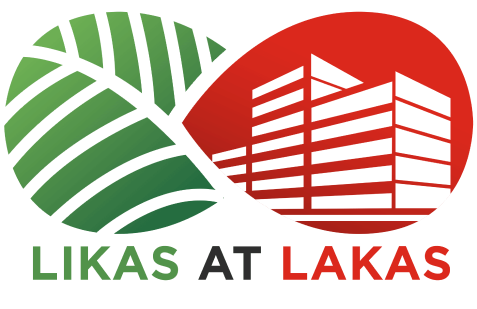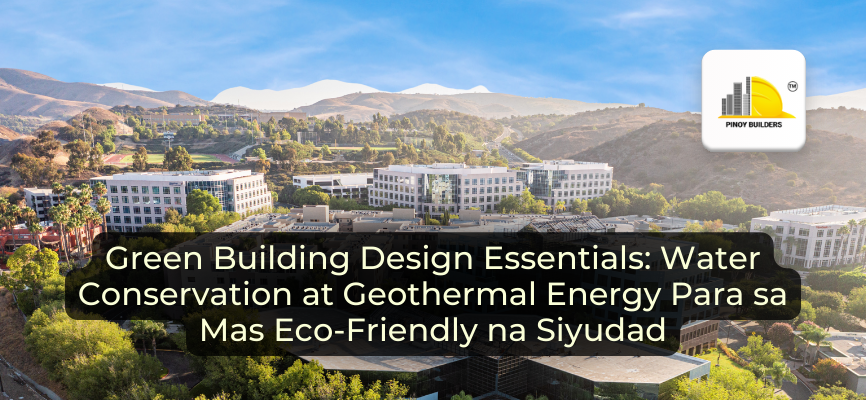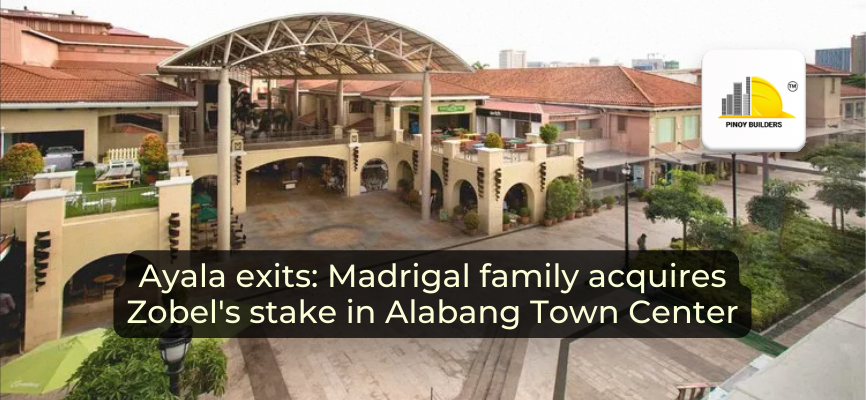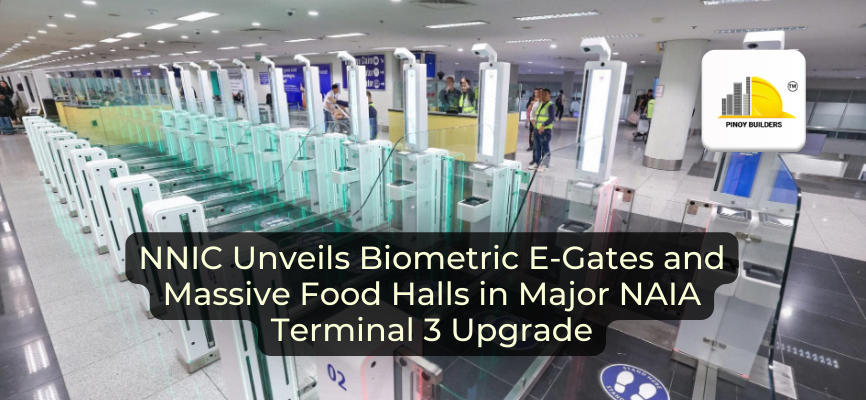With growing concerns about climate change, cities are starting to seek smarter ways to develop areas while reducing negative environmental impact. Green building plays a key role in this shift, creating spaces that are both livable and resource-efficient.
Among the most effective solutions are water conservation and geothermal energy—two concepts that prove urban development can progress in harmony with nature. Water conservation makes sure every drop counts, while geothermal energy taps into the Earth’s natural heat to power buildings efficiently. Together, they form a strong foundation for sustainable living, lowering the pressure on fossil fuels and large power plants.
In this article, we will take a look at how water conservation and geothermal energy fit into green building design, and how these practices help shape eco-friendly cities for the future.

How Do Geothermal Energy and Water Conservation Work in Building Greener Cities?
Greener cities thrive when buildings make smart use of natural resources. Geothermal energy and water conservation provide practical ways to maximize these resources while gradually moving away from traditional practices that strain the environment. Each brings distinct advantages, but when combined, they form a sustainable system that supports greener urban spaces and builds efficient networks for residents.
Geothermal Energy Works in Green Building Design for Cities
Rapid urbanization in the Philippines reduces green spaces. It raises electricity demand, making cities hotter and more prone to the “urban heat island” (UHI) effect, which is an area that is significantly warmer than its surrounding rural areas. With cooling a year-round necessity in our climate, air conditioners have become the default solution that, unfortunately, drives up electricity bills, strains the power grid during peak months, and contributes to higher carbon emissions.
Geothermal energy offers a smarter alternative. The Philippines is already the second-largest producer of geothermal electricity in the world, with decades of experience in tapping heat from beneath the earth. The same principle can be applied in cooling. Ground-source systems transfer excess indoor heat into the ground, where temperatures remain stable throughout the year. This makes them an energy-efficient and sustainable substitute for conventional air conditioning.
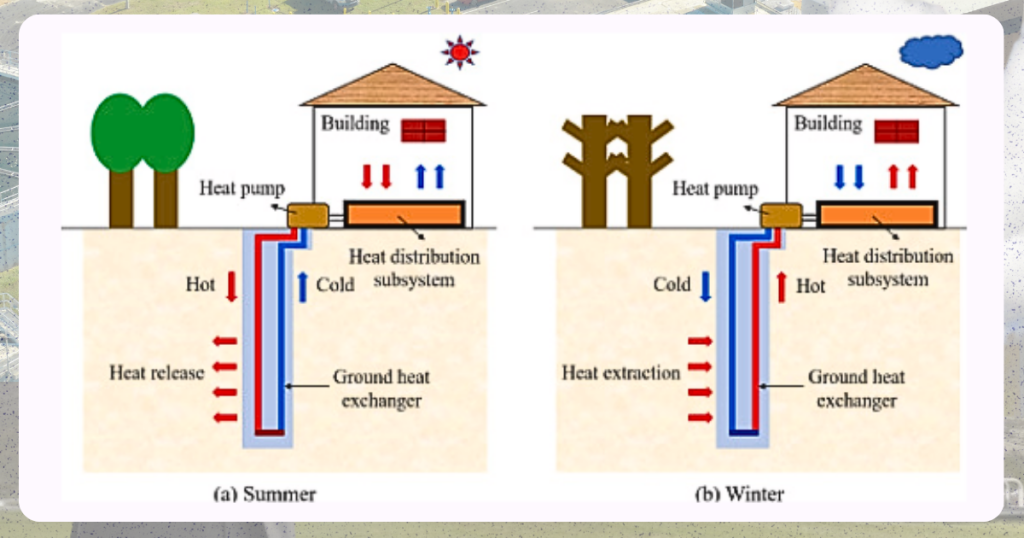
These systems use ground-source heat pumps linked to underground loops, which can be laid in trenches or drilled vertically depending on available space. Once installed, they can operate efficiently for decades with minimal maintenance.
A case study based in Egypt has shown that vertical closed-loop geothermal systems can cut electricity use for cooling by more than 20 percent while reducing carbon emissions. If adopted in Philippine cities, especially in dense areas like Metro Manila, Cebu, or Davao, the impact could be significant. Lower household and business expenses, reduced pressure on the power grid, and cooler urban environments all add up to healthier, more livable communities.
On a broader scale, shared geothermal networks in residential villages, commercial districts, or campuses could make the technology more cost-effective and accessible. For a country already rich in geothermal resources, adapting this expertise for cooling could be a key step toward sustainable, climate-resilient cities.
Water Conservation Strategies in Green Buildings
Smart water strategies start with capturing and reusing natural rainfall. Rainwater harvesting stores water for irrigation, toilet flushing, and cleaning. It reduces demand on centralized systems and helps landscapes thrive.
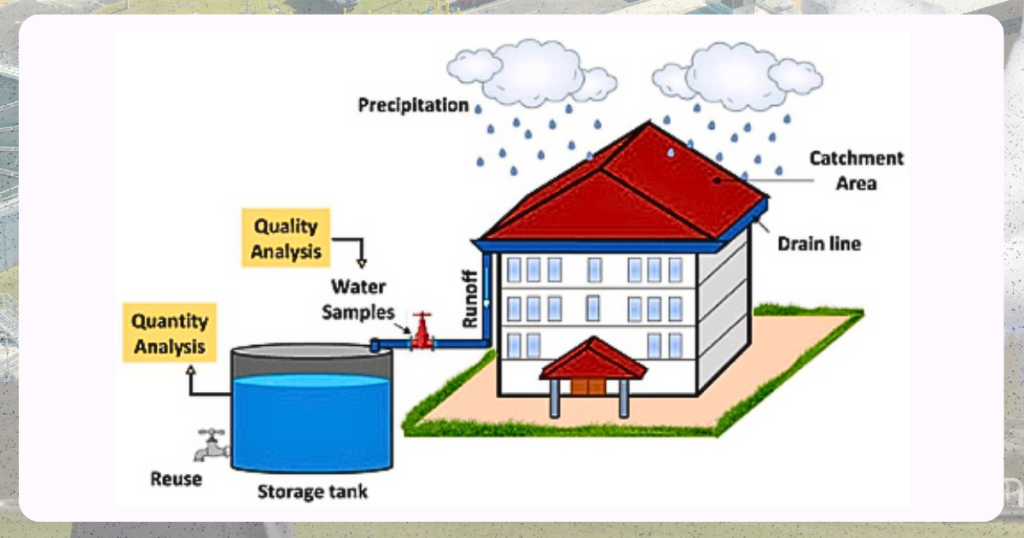
Greywater recycling gives sinks, showers, and laundry a second life. Advanced plumbing uses low-flow fixtures, sensor controls, and leak detection to save liters every day. In addition, green roofs and permeable paving support groundwater recharge and reduce runoff during heavy rains.
Monitoring and smart management amplify savings. Sensors, submeters, and analytics show when water use changes and where improvements matter most. Occupant-friendly design and clear information encourage habits that keep water flowing where it is most needed.
Water-smart buildings also support healthier waterways and lower treatment needs. Reduced runoff means fewer contaminants reaching rivers and coastlines, which benefits public health and local fisheries.
How Water Conservation and Geothermal Energy Work Together for a Green City
Water efficiency and geothermal energy strengthen each other in a thoughtful design. Lower water use eases pressure on municipal supply and wastewater systems. Geothermal systems cut electricity demand and stabilize building energy budgets.
Integrated projects often begin during early design so engineers, architects, and landscape experts can coordinate systems. Captured rainwater can support irrigation for cooling landscapes, and recycled water can reduce loads on heat rejection systems. This kind of cross-system thinking creates buildings that operate as part of a local resource loop.
Design tools and simulation help teams test combinations of water and energy options. The result is a balanced solution that meets comfort goals while keeping operating costs low. Neighbors and local utilities also benefit from fewer infrastructure surprises and smoother service.
Pilot projects at community centers or schools provide visible examples and learning opportunities. These demonstrations build public awareness and help refine design strategies at a human scale.
Benefits for Cities and Communities
Smart building strategies do more than improve individual structures. When geothermal energy and water conservation are applied at scale, they bring measurable benefits to entire communities.
- Cleaner air and lower emissions: Geothermal systems reduce pollution while mechanical equipment operates quietly.
- Stable utility costs: Residents benefit from predictable energy bills and reduced peak loads, easing strain on city energy grids.
- Resilience to water challenges: Water conservation lowers flood risk, reduces stress on treatment plants, and helps communities handle droughts.
- Economic opportunities: Installation, maintenance, and green building projects create local jobs and stimulate the growing sustainable construction sector.
- Supportive policies amplify impact: Public incentives, design guidelines, and community programs encourage adoption and expand benefits.
- Healthier neighborhoods and social equity: Lower utility costs for households and improved green spaces contribute to overall community well-being.
- Scalable city-wide benefits: Widespread adoption increases resource efficiency, cost savings, and climate resilience across urban areas.
These benefits show how green building practices extend beyond individual properties. When cities adopt geothermal energy and water conservation broadly, the result is healthier, more resilient, and more sustainable communities.
Building for the Future

Water conservation and geothermal energy are valuable essentials in green building design. They improve efficiency, lower costs, and strengthen community resilience.
Architects, developers, and local leaders can adopt these approaches to shape cleaner and smarter urban spaces. With each project, cities move closer to a future where sustainable living is not just a choice but the standard.
References
Wikipedia. (n.d.). Geothermal power in the Philippines. Wikipedia. Retrieved September 17, 2025, from https://en.wikipedia.org/wiki/Geothermal_power_in_the_Philippines
Fouad, H., Mahmoud, A.H. & Moussa, R.R. The effectiveness of geothermal systems in cooling residential buildings: a case study of a residential building in Alexandria, Egypt. J. Eng. Appl. Sci. 71, 45 (2024). Retrieved from https://doi.org/10.1186/s44147-024-00378-x
SWM Editorial Team. (n.d.). What are the most effective water-saving technologies for cities? Smart Water Magazine. https://smartwatermagazine.com/q-a/what-are-most-effective-water-saving-technologies-cities

